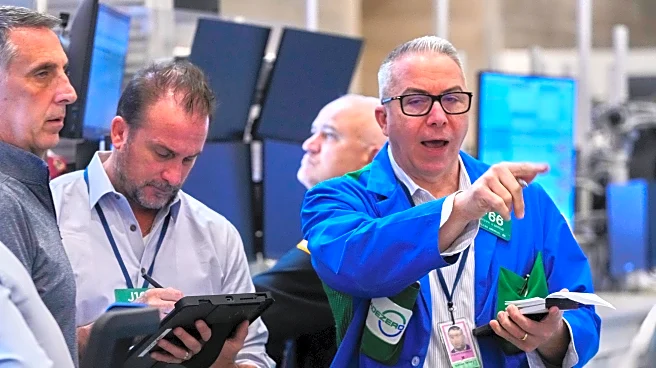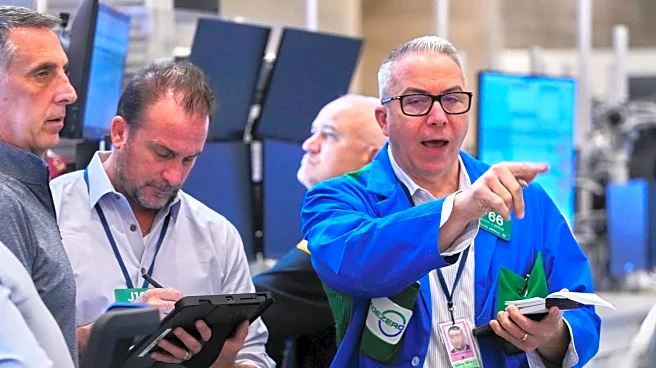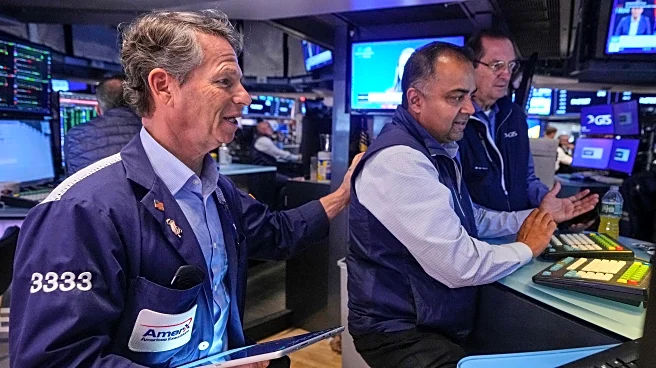What's Happening?
Wall Street is experiencing a significant upswing following a report indicating that U.S. households are facing less inflationary pressure than anticipated. The S&P 500 rose by 0.7%, nearing its all-time
high, while the Dow Jones Industrial Average increased by 226 points. The Nasdaq composite also saw a 0.9% rise. This positive market movement is attributed to a government report showing a smaller-than-expected rise in consumer prices, which has bolstered expectations for the Federal Reserve to cut interest rates in its upcoming meeting. The report, delayed due to a government shutdown, revealed a 3% increase in consumer prices in September compared to the previous year, slightly up from August's 2.9%. Core prices, excluding food and energy, also rose by 3%, down from 3.1% in August. These figures are above the Federal Reserve's 2% target but are seen as manageable, prompting optimism in the markets.
Why It's Important?
The easing of inflationary pressures is crucial for the U.S. economy as it suggests a potential stabilization of consumer costs, which could lead to increased consumer confidence and spending. The Federal Reserve's anticipated interest rate cut aims to support the slowing job market, making borrowing cheaper and potentially stimulating economic activity. This development is particularly significant for industries reliant on consumer spending and investment, such as retail and technology. Additionally, the positive market response reflects investor confidence in the Federal Reserve's ability to manage inflation without stifling economic growth. Companies like Intel and Ford have already seen stock price increases, indicating a broader market optimism that could lead to further economic gains.
What's Next?
The Federal Reserve is expected to meet next week, where it is likely to announce an interest rate cut, the second this year. This decision will be closely watched by investors and economists as it could set the tone for future monetary policy. Market participants will also be monitoring upcoming economic data releases to gauge the ongoing impact of inflation and the effectiveness of the Federal Reserve's measures. Additionally, geopolitical factors, such as U.S.-China relations, could influence market dynamics, especially with the planned meeting between President Trump and Chinese leader Xi Jinping.













